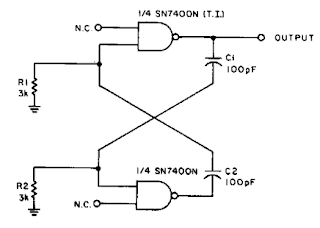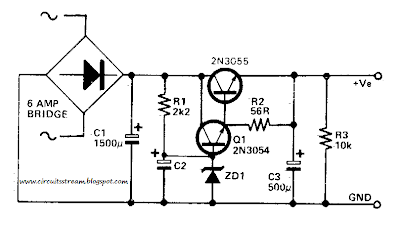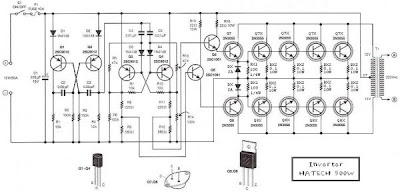Here is a simple circuit to obtain variable DC voltage from 1.25V to 15.19V in reasonably small steps as shown in the table.
The input voltage may lie anywhere between 20V and 35V. The first section of the circuit comprises a digital up-down counter built around IC1— a quad 2-input NAND schmitt trigger (4093), followed by IC2— a binary up-down counter (4029). Two gates of IC 4093 are used to generate up-down logic using push buttons S1 and S2, respectively, while the other two gates form an oscillator to provide clock pulses to IC2 (4029).
The frequency of oscillations can be varied by changing the value of capacitor C1 or preset VR1. IC2 receives clock pulses from the oscillator and produces a sequential binary output. As long as its pin 5 is low, the counter continues to count at the rising edge of each clock pulse, but stops counting as soon as its pin 5 is brought to logic 1. Logic 1 at pin 10 makes the counter to count upwards, while logic 0 makes it count downwards. Therefore the counter counts up by closing switch S1 and counts down by closing switch S2.

The output of counter IC2 is used to realise a digitally variable resistor. This section consists of four N/O reed relays that need just about 5mA current for their operation. ( The original circuit containing quad bilateral switch IC 4066 has been replaced by reed relays operated by transistorised switches because of unreliable operation of the former.) The switching action is performed using BC548 transistors. External resistors are connected in parallel with the reed relay contacts. If particular relay contacts are opened by the control input at the base of a transistor, the corresponding resistor across the relay contacts gets connected to the circuit.
The table shows the theoretical output for various digital input combinations.

The measured output is nearly equal to the theoretically calculated output across regulator IC3 (LM317). The output voltage is governed by the following relationship as long as the input-to-output differential is greater than or equal to 2.5V: Vout = 1.25(1+R2/R1) Where, R1 = R15 = 270 ohms (fixed) and R2 = R11 + R12 + R13 + R14 = 220 + 470 + 820 +1500 ohms = 3,010 ohms (with all relays energised) One can use either the binary weighted LED display as indicated by LED1 through LED4 in the circuit or a 74LS154 IC in conjunction with LED5 through LED20 to indicate one of the 16 selected voltage steps of Table I. The input for IC4 is to be tapped from points marked ‘A’ through ‘D’ in the figure. This arrangement can be used to replace the LED arrangement at points A, B, C, and D. This 74LS154 IC is a decoder/demultiplexer that senses the output of IC2 and accordingly activates only one of its 16 outputs in accordance with the count value. LEDs at the output of this IC can be arranged in a circular way along side the corresponding voltages.
When the power is switched on, IC2 resets itself, and hence the output at pins 6, 11, 14, and 12 is equivalent to binary zero, i.e. ‘0000’. The corresponding DC output of the circuit is minimum (1.25V). As count-up switch S1 is pressed, the binary count of IC2 increases and the output starts increasing too. At the highest count output of 1111, the output voltage is 15.19V (assuming the in-circuit resistance of preset VR2 as zero). Preset VR2 can be used for trimming the output voltage as desired. To decrease the output voltage within the range of 1.25V to 15.2V, count-down switch S2 is to be depressed.
Notes.
1. When relay contacts across a particular resistor are opened, the corresponding LED glows.








